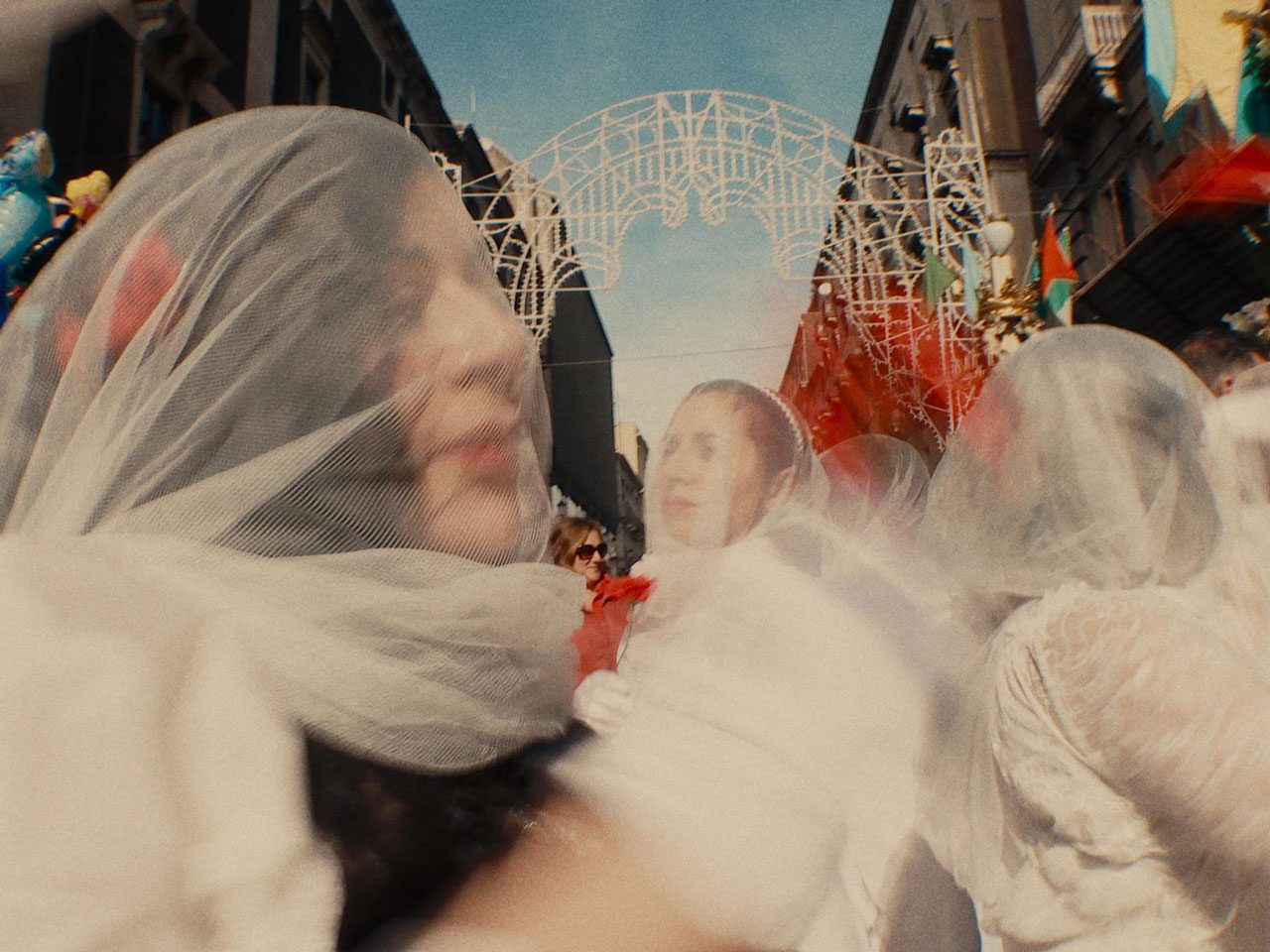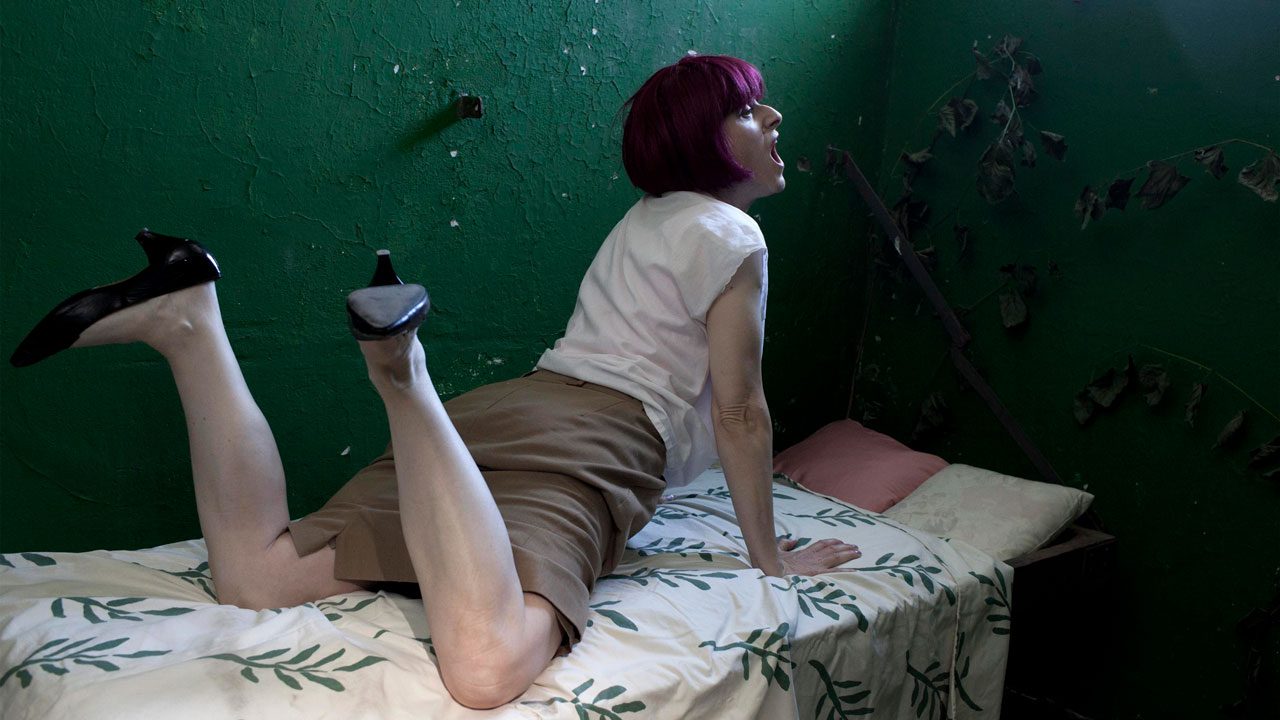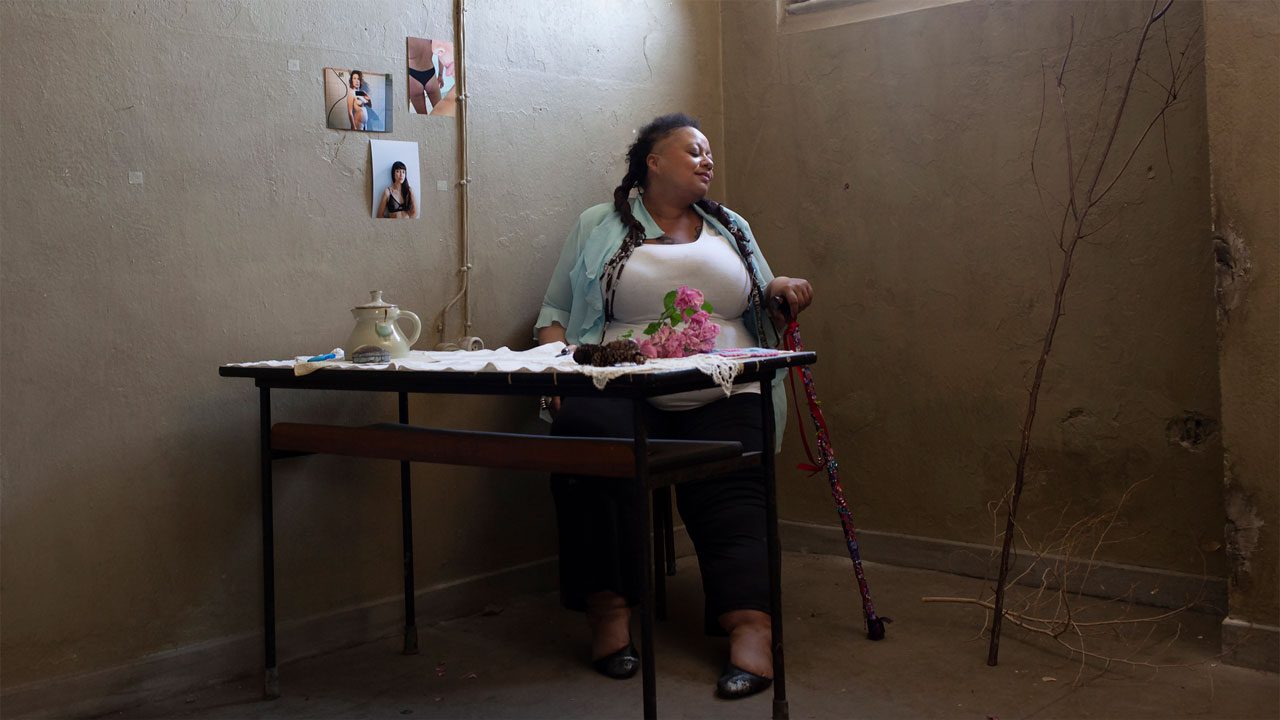PRESENTATION: Pauline Curnier Jardin
 Pauline Curnier Jardin employs cinematic narrative, installation, sculpture and performance to create immersive art. While investigating prevailing norms and stereotypes, the works can also be wildly humorous and visually abundant in both form and style. Curnier Jardin’s key theme is assumptions about women and marginalised communities, which she deconstructs through the most diverse methods of staging and narrative. The typical materials of her art are history, mythology, religion and folklore.
Pauline Curnier Jardin employs cinematic narrative, installation, sculpture and performance to create immersive art. While investigating prevailing norms and stereotypes, the works can also be wildly humorous and visually abundant in both form and style. Curnier Jardin’s key theme is assumptions about women and marginalised communities, which she deconstructs through the most diverse methods of staging and narrative. The typical materials of her art are history, mythology, religion and folklore.
By Dimitris Lempesis
Photo: Kiasma Museum Archive

Pauline Curnier Jardin presents her first solo exhibition in Filand. where she lived for a year early in her career. The artist transforms Kiasma’s exhibition space into a grotesque theme park. The film works that await us in its depths offer glimpses into the fate of women and others marginalised in various ways in “entertainment” and as objects of power. The films in the exhibition deal with gender norms, power and violence, for example, through historical events, the carnality associated with the Catholic Faith, and the experience industry with its emphasis on romance. They show the power relations in society in a garish, sometimes comical, light. The female body is presented as object of power, but women also subvert and wield power. Pauline Curnier Jardin and set designer Rachel García have together created carnivalistic backdrops for the exhibition – their colours and lights draw us in. The soundscape created for the occasion generates an amusement park-like atmosphere. But, both the scenography and the sound warn us that something more ambiguous is about to emerge. “Qu’un Sang Impur” (2019) began as a loose remake of Jean Genet’s “Un Chant d’Amour” (1950), a homoerotic love story between inmates in a prison, under the yearning watch of a sadistic prison guard. In Curnier Jardin’s film, shiny young male bodies are replaced with post-menopausal women, who celebrate their erotic power after shedding the patriarchal construct which places them ‘of the market’ (as author Virginie Despentes would say). Having escaped the endless reproductive loop, the artist ascribes a special power to this stage in a woman’s life, uncoupled from being an object of desire. In their moment of need, they bleed again. The film “Fat to Ashes (2021)”, combines three storylines: a religious festival in honor of St. Agatha, the slaughter of a pig, and the Carnival of Cologne. The spectacle centers on the film inside an imposing, spacious arena right in the middle of the museum. Reminiscent of Rome’s Colosseum, the arena rises up to a great height like a set. Rather than being built of solid brickwork, the walls of the arena are porous. Seen from a distance the arena looks like a huge cake, with a facade made of marzipan. “Fireflies (Lucciole)” (201) is a collaborative meditation on liminal spaces and desire. The film was developed together with the sex workers from the Feel Good Cooperative in Rome, which was co.initiated by the artist in an effort to provide financial assistance to sex workers during the pandemic. It was shot on the margins of the ancient imperial city. Long ago, there used to be fireflies there. Today, the headlights of cars act like searchlights, while suitors spot sex workers through erratic flashes of light. They in turn may be lit up by a flashlight directed at their invisible bodies, a brazier or little bonfire. In this instant, the mostly trans sex workers working and performing there are themselves reminiscent of firefliesAt the centre of Pauline Curnier Jardin’s practice stands the refusal to identify with the masks and markers of violence and the categories and genres of visibility and narratability that sustain and naturalize this violence. Her works animate lived solidarity with violations and subjections, but even more so, with vivid and perpetual rebellions against the total framework of life’s subjection.
Photo: Pauline Curnier Jardin, Fat to Ashes, 2021, Photo: Mathias Völzke, Courtesy the artist and Museum of Contemporary Art Kiasma
Info: Curators: Patrik Nyberg, Piia Oksanen and Max Hannus, Museum of Contemporary Art Kiasma, Mannerheiminaukio 2, Helsinki, Finland, Duration: 11/10/2024-23/2/2025, Days & Hours: Tue–Fri10:00–20:00, Sat–Sun10:00–17:00, https://kiasma.fi/



![Pauline Curnier Jardin, Lucciole (Fireflies) [Video still], 2021, Courtesy of the artist and ChertLüdde, Berlin and Ellen de Bruijne Projects, Amsterdam](http://www.dreamideamachine.com/web/wp-content/uploads/2024/10/PaulineCurnierJardin_Lucciole_Fireflies_4.jpg)
![Pauline Curnier Jardin, Lucciole (Fireflies) [Video still], 2021, Courtesy of the artist and ChertLüdde, Berlin and Ellen de Bruijne Projects, Amsterdam](http://www.dreamideamachine.com/web/wp-content/uploads/2024/10/PaulineCurnierJardin_Lucciole_Fireflies_6.jpg)


